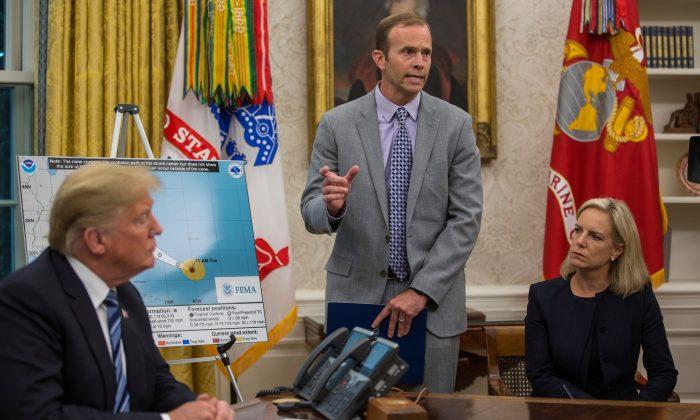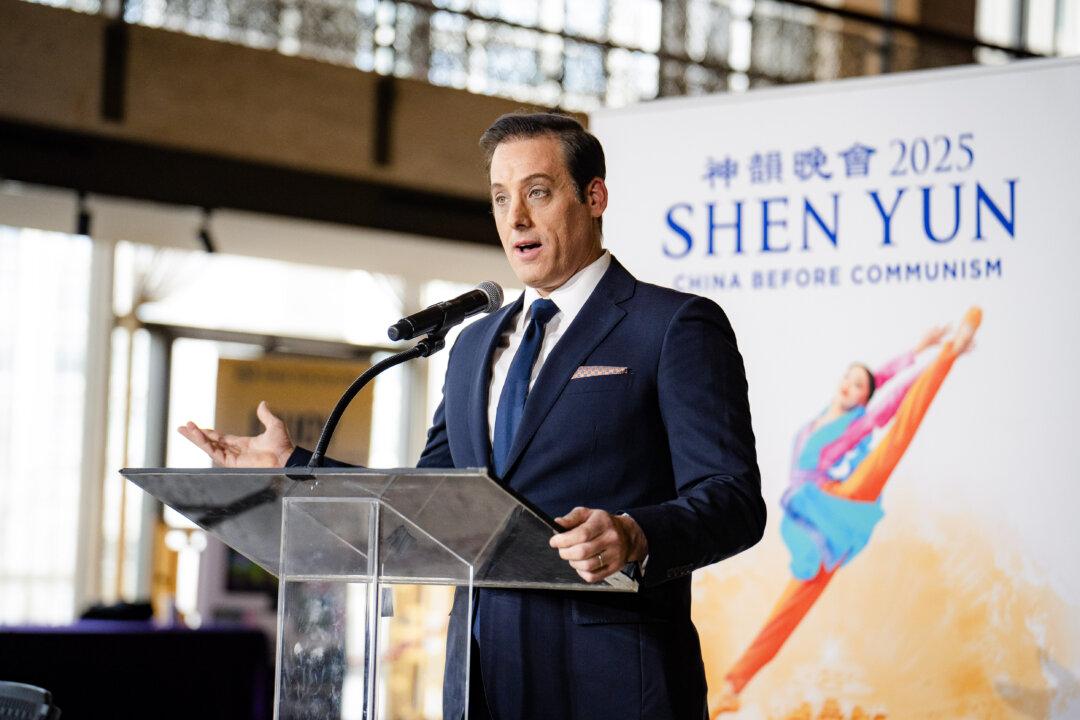Federal Emergency Management Agency Administrator Brock Long is defending President Donald Trump’s criticism of Puerto Rico’s official figure for deaths caused by Hurricane Maria.
Long said Trump, who says the death toll was improperly inflated to defame his administration, was defending the work FEMA has done in Puerto Rico.
Maria hit Puerto Rico on Sept. 20, 2017, and caused massive damage to the island’s already dilapidated infrastructure.
After several updates, the territory government set the official death toll at 64. More fatalities had been expected, and the government hired a team from George Washington University to review the number based on death certificates and a more in-depth research.
The study was published on Aug. 28 and estimated 2,975 “excess deaths” due to Maria. The Puerto Rican government, led by Democrat Ricardo Rosselló, used the figure as the official death toll.
“In my opinion, what we’ve got to do is figure out why people die from direct deaths, which is the wind, the water, and the waves, buildings collapsing,” he said. The deaths caused indirectly, on the other hand, are harder to attribute.
“You might see more deaths occur as time goes on because people have heart attacks due to stress, they fall off their house trying to fix their roof, they die in car crashes because they went through an intersection when the stop lights weren’t working,” he said.
The Harvard study stated the primary cause of high mortality rates in the months post-hurricane was due to interruption to medical care.
“Growing numbers of persons have chronic diseases and use sophisticated pharmaceutical and mechanical support that is dependent on electricity,” the authors wrote.
FEMA organized the major workforce for fixing the grid, having over 2,000 Army Corps of Engineers personnel working on the repairs.
Long appreciated that Trump stood behind FEMA’s work.
“He is probably the one president that has had more support for what goes on back here,” he said, pointing to the FEMA employees working behind him. “I think he’s defensive because he knows how hard these guys behind me work day in and day out for a very complex situation.”





